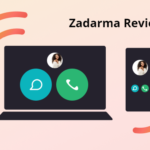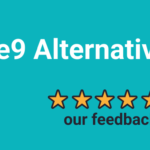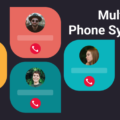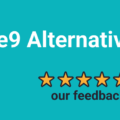While website chat has been on the rise, there is one thing that people love more than texting – talking to other human beings.
Business phone systems that function on VoIP have been around for a while and they are by far the best and easiest way to talk to your customers.
One app has been prominent in the VoIP industry – RingCentral. Similar to Slack in the communication niche, this SaaS application has been the go-to solution for companies that want a robust way to provide support for their customers.
Today, we’ll take a look at some of the best RingCentral alternatives to see what makes them better or worse than RingCentral.
Plus, we’ll see which alternative works best for your use case.
Let’s get started. But first…
Why RingCentral?
There may be a few reasons why RingCentral has remained one of the top VoIP providers for a variety of businesses.
The company was founded all the way back in 2003 and launched as a business phone service.
Moreover, RingCentral developed a variety of features aiming at small and medium-sized businesses and enterprise companies.

RingCentral offers phone support for a lengthy list of countries, starting with the USA and Canada, all the way to France, Australia, Germany, and many others.
Besides phone support, its offer expands to SMS, call management, internet fax, visual voicemail and many other ways for customers to get in touch with your business.
Moreover, RingCentral has numerous integrations with other apps such as Slack, Salesforce, Zoho, Zapier, Zendesk, and others, making it easy to connect all of your work apps in one place.
While RingCentral has a pretty complex pricing structure, you can get the most basic package for as little as $19.99 per user per month.
Prices depend on what features you need, how many users you have on your team and whether you are paying monthly or annually.
However, for the sake of comparison, we’ll use the most popular RingCentral plan, called Premium, which starts at $34.99 per user per month when paid annually.
The top RingCentral alternatives
Here are our top RingCentral alternatives:
- Ringblaze
- Grasshopper
- Nextiva
- Vonage
- 8×8
The RingCentral alternatives on this list are based on several criteria. We chose the apps based on several criteria, including:
– Functionality
– Pricing
– Ease of use
– Online reviews
– Call quality
– Call limitations (international calls)
– The number and quality of integrations
– Help documentation availability
– Customer support quality etc.
The apps we chose as RingCentral alternatives are based on our own experience with testing them for at least three weeks. Let’s dive in.
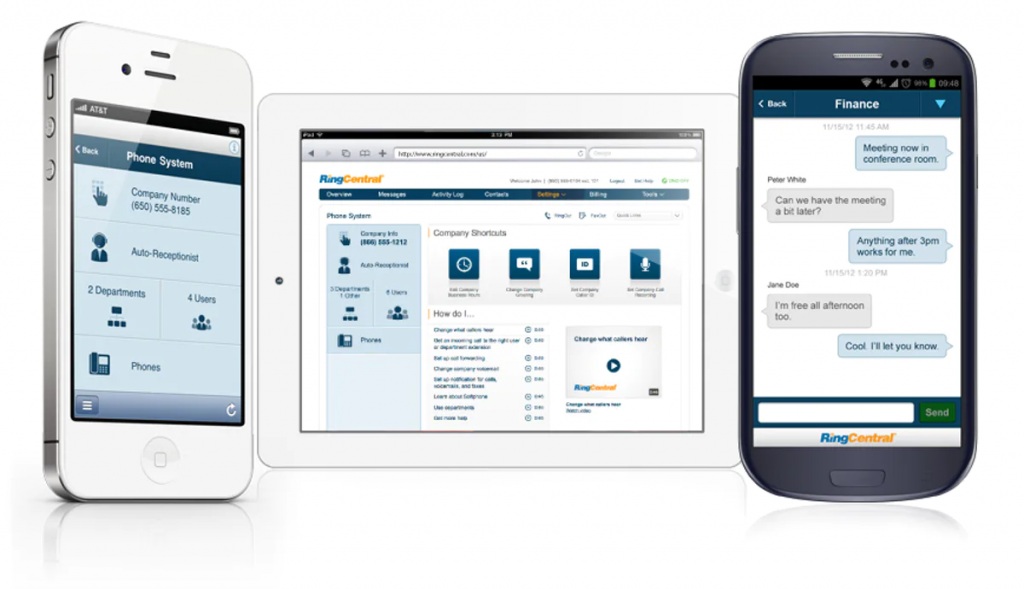
1. Ringblaze vs RingCentral

When launching Ringblaze three years ago, we had one goal in mind – setting up a phone business solution that works well for small businesses and that has the option of international phone calls and numbers at low prices.
So far, we’ve been able to do that.
Ringblaze aims at a very specific, niche market – small and medium businesses that have a strong need for phone support.
Some of the industries that the app serves include eCommerce, travel agencies, marketing agencies, computer support agencies and all other businesses with a strong focus on phone sales and support.




What makes it better than RingCentral

The first feature that sets Ringblaze apart is that it allows for multiple phone numbers within a single app.
That way, one customer support or sales agent can make and receive calls from more than one number. On the other hand, RingCentral gives you one number per app.
Moreover, Ringblaze works for all companies around the world and it doesn’t require a specific location. On the other hand, RingCentral requires you to be in the US, Canada, UK or Puerto Rico to be able to even sign up for their app.
You can use Ringblaze with international phone numbers as soon as you register, while RingCentral has the option, but you have to get in touch with them to activate the feature.
One of the best features in RingCentral is its dashboard for team collaboration. Unfortunately, the dashboard is a big-ticket item available only in the call center solution for enterprise. Small businesses simply can’t afford it.
Moreover, you have to request the feature by contacting the RingCentral support first. On the other hand, Ringblaze has a shared dashboard for small teams, no matter how small the team is. Unlike RingCentral, enjoying a dashboard feature in Ringblaze doesn’t cost an arm and a leg.
There are some great features that Ringblaze offers and which don’t come in RingCentral. One of them is call assignment – the ability to assign calls to individual agents.
Moreover, you can leave comments on calls within the dashboard. Finally, you can record calls in Ringblaze, even in the cheapest plans, while RingCentral locks this feature for only the highest tiers in their pricing plan.
Finally, Ringblaze is easier to set up and use, especially compared to setting up a larger team in RingCentral.
One excellent Ringblaze feature missing in Ringcentral (and all of the competitors below) is the click-to-call widget or, simply put, “Call us” website button.

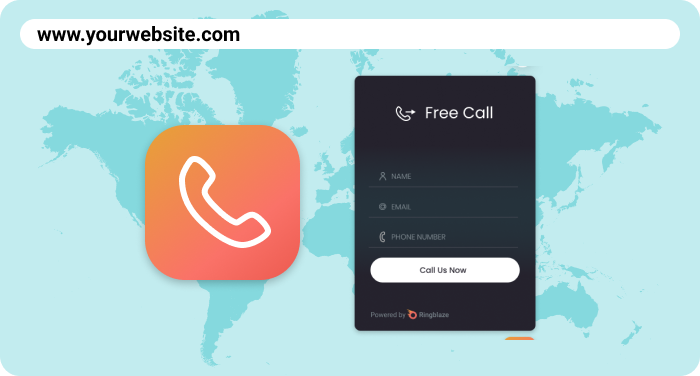


Basically, the customer browsing the website can click a button at any time and call you. One click is all it takes – this kind of super simple user interface is something that all other RingCentral alternatives don’t have.
Moreover, Ringblaze lets you generate a call-widget link that you can add anywhere – your website, your email signature or even to your blog article.
This widget is extremely useful, no matter what your business is and what you sell. You can use it to engage with your clients more easily, talk to them while they browse your website, improve your customer care and retention and, in general, improve your conversion rates significantly.
Ringblaze pricing
One of the things that people really love about Ringblaze is pricing. There’s only one crystal clear plan where all you pay is $15 per user per month when paid annually, which includes unlimited calls to the US and Canada, a free local number, a call widget and all the other features mentioned above. One thing is clear: it’s much easier to choose a plan in Ringblaze than it is in RingCentral.

Ringblaze summary
Overall, Ringblaze is a capable newcomer that packs a lot of punch for a very small price compared to RingCentral.
If you want to start using a capable business phone service that is more functional, easier to use and more affordable than RingCentral, sign up for Ringblaze today!
2. Grasshopper vs. RingCentral
One of the best-known RingCentral alternatives, Grasshopper, has been around for almost the same time and it serves a very similar target market.
With two of its currently available products (Grasshopper and Grasshopper Connect), the app covers a variety of different industries and use cases.
However, their key focus is small businesses and individuals who want to set up a business phone service and have a more professional appearance online.

What makes it better than RingCentral
By far, the most useful Grasshopper feature is that you can get unlimited texts, domestic calls and voicemails.
It comes with a robust desktop and mobile app so you can be available no matter where you are.
Another neat feature that makes it easy to have a 24/7 service is Grasshopper’s automated attendant.
It functions like an answering machine that interacts with your callers when you’re not around. You can record your own messages for the attendant or you can even hire a professional to do voiceover work for you.
This feature is present in RingCentral too, but the Grasshopper version is easier to use and set up.
Voicemail transcription is another great feature that Grasshopper offers. It allows you to automatically transcribe your inbound voicemails so that they are kept as a written recording.
If you want to have a searchable database of messages, this feature is really useful.
When it comes to onboarding and ease of use, Grasshopper excels and is definitely the better choice over RingCentral.
When you sign up, you can choose a number and they offer lots of variety. Toll-free, vanity, local numbers or even porting your own numbers – Grasshopper has lots of options for different use cases and needs.
Grasshopper pricing
When it comes to pricing, Grasshopper is the more expensive of the two contenders. The basic plan starts at $29 per user per month, compared to $19.99 with RingCentral. However, being the cheapest plan, it doesn’t have many of the features that RingCentral offers.
Moreover, you need a phone line before signing up for this plan – you don’t get any numbers from Grasshopper unless you upgrade.
This is probably one of the biggest downsides of Grasshopper because you have to pay more to get the equivalent service. Also, it can take quite a bit of time to get the initial setup and your number ported.
Grasshopper summary
Overall, Grasshopper is an excellent choice for companies and individuals that want the option of unlimited calls, messages, and even faxes, with a large variety of phone number options to choose from. We are not convinced that it’s the better RingCentral alternative, but it is a worthy opponent. Check out our blog articles on Grasshopper alternatives and how Grasshopper compares to RingCentral and Google Voice.
3. Nextiva vs. RingCentral
When you ask around for the best in class with business phone providers, Nextiva is the name that is most likely to pop up next to RingCentral.
No wonder, since it’s been around since 2006 and used by small businesses and enterprise companies around the USA.
In fact, there are currently over 150,000 companies using Nextiva as their VoIP solution.
At the moment of writing, Nextiva has three key offers: Business Communication Suite (which is what interests us), Customer Relationship Suite and Team Communication Suite.
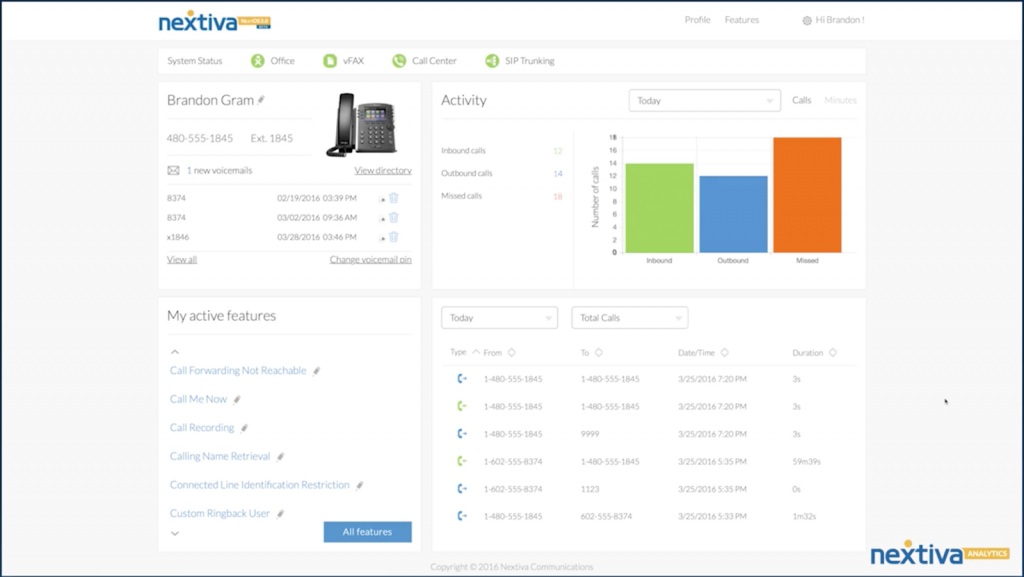
What makes it better than RingCentral
One of the features that we appreciated about Nextiva is that collaboration is at the very heart of the app.
Within the same dashboard, you can access customer and team communication so you can effortlessly switch from communicating with your customers to talking with your team.
Nextiva offers unlimited calling and SMS messages, much like its main competitor. There is a desktop and mobile app, so you can communicate on the go and switch back and forth between the two apps.
It is clear from the very start that Nextiva wants to achieve one thing – create a unified communications platform for customers and teams, all in one app.
Much like the others on this list, there is a focus on serving remote teams, which Nextiva does very well with its team communication suite and a system they call NextOS.
There are about two dozen integrations in Nextiva, but they insist that you don’t need any integrations at all. While that may be true, you will have to pay an additional $10-30 per month if you want to use their own Customer service CRM or Sales pipeline CRM.
The good news is that there is a good choice of integrations with the basic plans, including Salesforce, Zendesk, ServiceNow, Hubspot, and others.
If things get stuck, Nextiva has an excellent customer support system with phone support over 12 hours per day. No matter what time zone you’re in, you will be able to catch an agent to help you.
Besides getting them on the phone, you can send a support ticket, read their knowledge base or reach out through live chat on their website.
Nextiva pricing
The cheapest plan is similar to RingCentral at $19.95 per user per month, offering you unlimited calls in the USA and Canada, as well as a free local and toll-free number. There is a cap on 1,000 toll-free minutes.
What is really odd is that the next plan is Professional, at $20.95 per user per month, only a dollar more. That dollar gives a lot of value because it means 2,500 toll-free minutes instead of 1,999, as well as unlimited business SMS messages per month.
It also unlocks some cool features, such as unlimited audio conference calls for up to 40 participants. Overall, this is the best plan in terms of value for money.
Nextiva summary
Overall, Nextiva is a great choice for small and mid-sized businesses that like the functionalities of RingCentral and want to pay a similar price but want to feel more connected with their team while going about their daily tasks.
See also: Nextiva alternatives and Nextiva vs Grasshopper
4. RingCentral vs. Vonage
On the basis of numbers alone, Vonage is a force to be reckoned with. Founded in 2001, Vonage has over 1.3 million subscribers at the moment of writing this article.
Promising 99.99% reliability, Vonage offers a basic business phone system coupled with unlimited calls, SMS messages, team collaboration tools, and over 50 different phone features.
It’s one of the biggest players in the game and a great RingCentral alternative.

What makes it better than RingCentral
Besides the phone business solution, you can also use Vonage to stay in touch with your internal team. In fact, starting with their Premium plan, you get access to features such as team messaging, video conferencing and file sharing for up to 100 people.
If you’re not already using a business communication tool like Slack, this is a great way to get two (or even more) tools for the cost of one subscription.
Another thing we liked was the numerous integrations. Some of them include G Suite, ConnectWise, Netsuite, Microsoft Dynamics, Zoho CRM, Salesforce, SugarCRM and others.
See also: Broadvoice vs Vonage comparison
Vonage pricing
When it comes to pricing, the cheapest plan is called Mobile and it’s $19.99 per month per line and it comes with unlimited calls and SMS messages and that’s about it. Oh yeah, you also have to add taxes to that price, as well as any additional fees.
Their second most expensive plan is called Premium (for some reason) and it comes with everything from Mobile along with some extras. You get video conferencing tools, chat and file sharing for up to 100 people.
Actually, while Vonage does offer a more comprehensive set of features for different sorts of communication, we have a hard time recommending it based on price alone. Everything that comes free in RingCentral requires an upgrade in Vonage.
For example, toll-free numbers are free in RingCentral and they cost an additional $39.99 per month in Vonage. You have to pay $4.99 extra for call recording and the auto attendant is not available in the cheapest plan.
Vonage summary
Overall, Vonage is very robust and capable and offers everything that RingCentral has to offer plus some more. If you don’t mind paying the extra few bucks per each account, it’s a good choice, albeit better suited for the enterprise sector rather than SMBs. Check out our blog article on Vonage alternatives as well.
5. 8×8 vs. RingCentral
The company 8×8 has been around longer than some of its most faithful customers – it was founded in 1987. However, they only started getting into the VoIP scene in 2000.
At the moment of writing, 8×8 has over one million customers in over 100,000 different businesses around the globe.

What makes it better than RingCentral
Let’s get the most important thing out of the way first – 8×8 offers unlimited international calling in all of its plans, while RingCentral only has this feature for calls in the USA and Canada.
Most other features are comparable, such as the unlimited number of SMS messages, call recording, 24/7 support, mobile and desktop apps, etc.
One neat element of 8×8 is the option of local presence and numbers for each of the 47 available countries. That way, your international customers can call you locally without being charged expensive rates for international calls. However, (unlike in Ringblaze, for example) there is an additional fee to use this feature.
Finally, something that is neat but not useful for our own testing was the speech analytics feature. It does exactly what it promises – analyzes your calls to spot keywords and then groups conversations around topics that come up frequently. If you want to find out what your agents and customers talk about often, this is a superb feature to have.
8×8 pricing
Prices start at $25 per month per user, which is slightly more expensive than RingCentral. However, there is one major difference – 8×8 gives you unlimited calls in as many as 14 countries, even in its cheapest plan.
If you upgrade to the next one (a plan called X Series X4), you get unlimited calls to 47 different countries, which is a hard offer to beat at $45 per month. The most expensive plan comes in at $175 monthly. There is a 30-day free trial to try out, but only for the most basic plan.
8×8 summary
Although the features are on par with RingCentral, from our own personal use, we found that RingCentral is much more intuitive. The layout looks busy and you’ll wander to their FAQ section quite a bit in the early days of using the app. However, things are pretty easy from that point on.
See also: 8×8 alternatives
RingCentral alternatives: Final verdict
The field of business phone providers is very competitive. From old-time foes like Nextiva and Vonage to up-and-coming companies like Ringblaze, there are plenty of competitors who are out to take RingCentral’s crown.
If you are looking for a tool that is reliable, affordable, fast, packed with lots of features, has a super simple pricing plan and is extremely easy to use, we suggest giving Ringblaze a try.
It perfectly meets the needs of the SMB sector and has most of the RingCentral features (and a few extras), at a more affordable price. Sign up today and see why Ringblaze is the best RingCentral alternative out there!
See also:
RingCentral alternatives: FAQs
Grasshopper is better for small businesses looking for a simple virtual phone system, whereas RingCentral is better for larger companies. Grasshopper is more expensive and requires having a phone number. For more information, check out our RingCentral vs Grasshopper vs Google Voice comparison.
This alternative to RingCentral costs a little bit more but includes more advanced communication features. We recommend it for enterprise-level companies with larger budgets and bigger requirements. However, keep in mind that Vonage doesn’t offer an international number, so if you operate outside of the US, RingCentral would be a better option. Check out our RingCentral vs Vonage comparison for more information.
Zoom Phone integrates seamlessly with the Zoom meeting platform, making it a convenient choice if you already use Zoom for video meetings. RingCentral offers a broader range of advanced features that go beyond voice calling, making it better for businesses with diverse communication needs. Also, RingCentral has unlimited video meetings.
Published on January 28, 2021. Updated on February 13, 2024.




